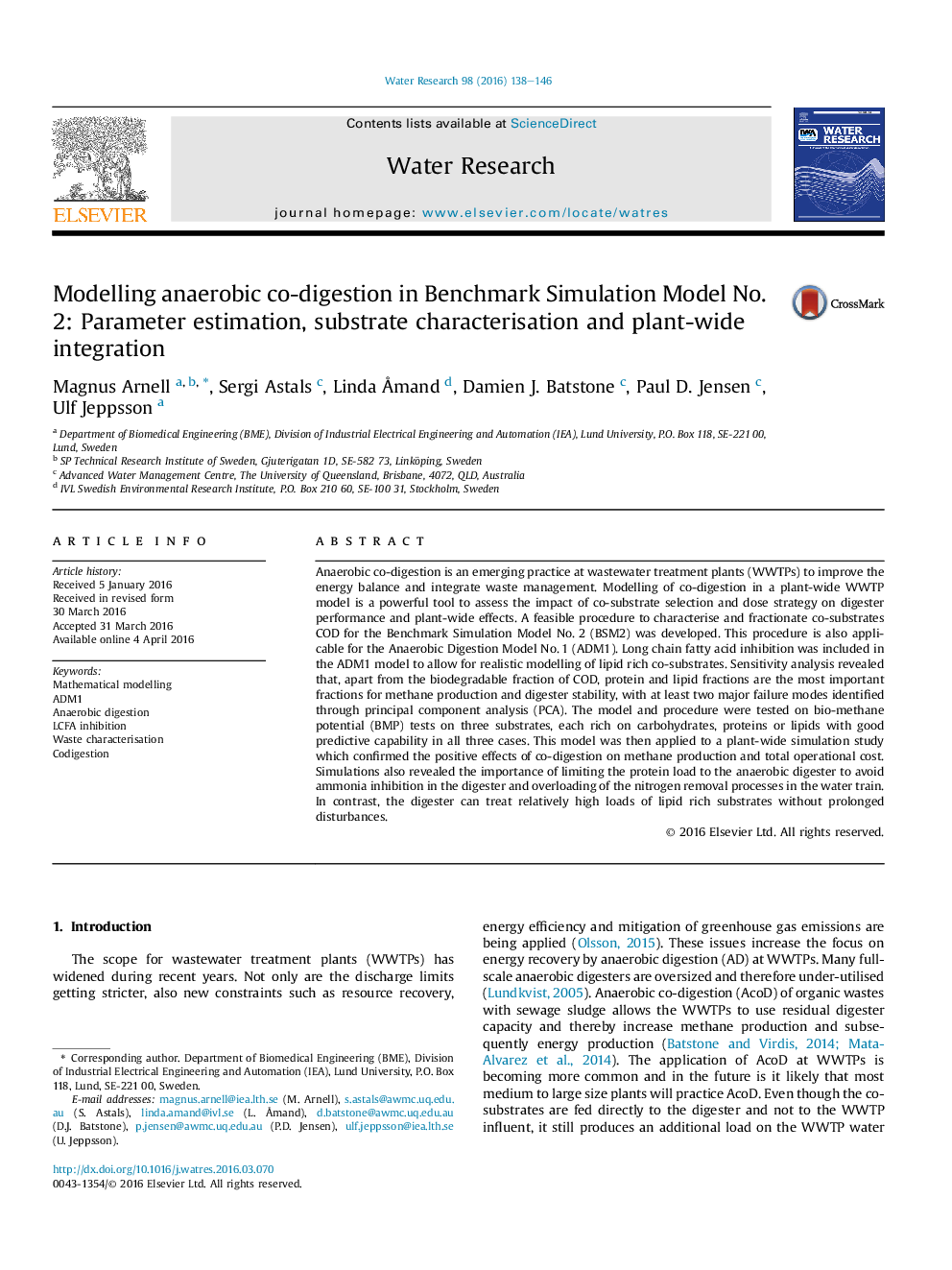| کد مقاله | کد نشریه | سال انتشار | مقاله انگلیسی | نسخه تمام متن |
|---|---|---|---|---|
| 4480978 | 1623070 | 2016 | 9 صفحه PDF | دانلود رایگان |
• Practical methodology for co-substrate characterisation and fractionation for ADM1.
• Key components of co-substrate feed identified by sensitivity analysis.
• Implementation of anaerobic co-digestion in BSM2 and a supporting case study.
• Plant-wide effects of co-substrate selection and feed strategy demonstrated.
Anaerobic co-digestion is an emerging practice at wastewater treatment plants (WWTPs) to improve the energy balance and integrate waste management. Modelling of co-digestion in a plant-wide WWTP model is a powerful tool to assess the impact of co-substrate selection and dose strategy on digester performance and plant-wide effects. A feasible procedure to characterise and fractionate co-substrates COD for the Benchmark Simulation Model No. 2 (BSM2) was developed. This procedure is also applicable for the Anaerobic Digestion Model No. 1 (ADM1). Long chain fatty acid inhibition was included in the ADM1 model to allow for realistic modelling of lipid rich co-substrates. Sensitivity analysis revealed that, apart from the biodegradable fraction of COD, protein and lipid fractions are the most important fractions for methane production and digester stability, with at least two major failure modes identified through principal component analysis (PCA). The model and procedure were tested on bio-methane potential (BMP) tests on three substrates, each rich on carbohydrates, proteins or lipids with good predictive capability in all three cases. This model was then applied to a plant-wide simulation study which confirmed the positive effects of co-digestion on methane production and total operational cost. Simulations also revealed the importance of limiting the protein load to the anaerobic digester to avoid ammonia inhibition in the digester and overloading of the nitrogen removal processes in the water train. In contrast, the digester can treat relatively high loads of lipid rich substrates without prolonged disturbances.
Figure optionsDownload high-quality image (198 K)Download as PowerPoint slide
Journal: Water Research - Volume 98, 1 July 2016, Pages 138–146
